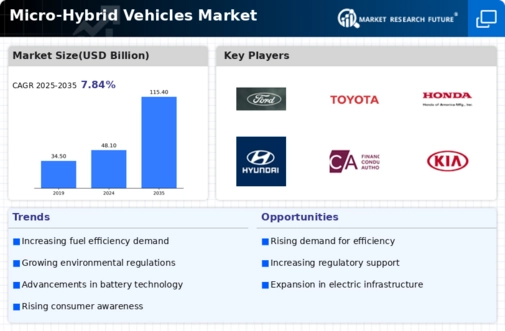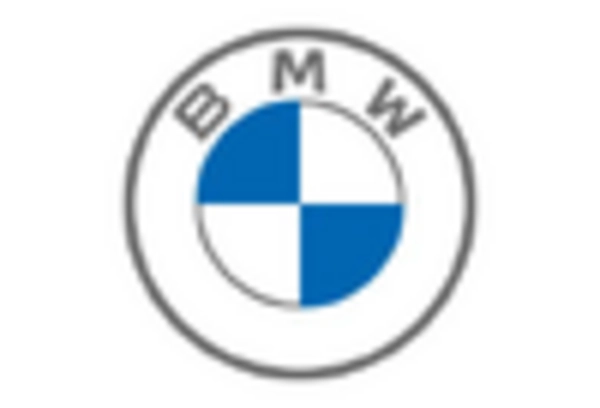Market Share
Micro-Hybrid Vehicles Market Share Analysis
The recent trends in the micro-hybrid vehicles market have been significant as they reflect how auto industry has responded to demands for fuel efficiency, environmental awareness and evolving landscape of electric mobility. One notable trend in this market is the increasing penetration of mild hybrid technology as an intermediate step towards complete electrification. A small electric engine and secondary battery are combined in micro hybrids also known as start-stop systems to assist internal combustion engine while idling or breaking. This system boosts fuel efficiency by stopping the engine automatically when a vehicle is stationary and starting it again once the driver depresses accelerator. Micro-hybrids provide car manufacturers with a cost-effective method of reducing fuel consumption and greenhouse gas emissions thus achieving sustainability amidst ever-increasing stringent emission standards.
Additionally, another key trend that is shaping up micro-hybrid vehicles’ market is increased consumers’ understanding as well as demand for greener transport options. Micro-hybrids offer an environmentally-friendly alternative to conventional gasoline powered vehicles without limited range issues often associated with full-electric alternatives. These appeal to customers who want better fuel economy figures alongside lower carbon emissions but who still need longer journey distances common with traditional gasoline-powered machines among other things. Given that sustainability has become an important aspect influencing consumers’ choices today; this makes micro hybrids a right option for eco-conscious drivers.
Furthermore, there is another major trend that can be seen in regard to advanced technologies being integrated into connectivity features and their potential impact on mi-cro hybrid vehicles. Through digital transformation of automobile industry, smart capabilities such as regenerative braking, predictive energy management and improved start-stop functions are being built into micro-hybrid systems. These technologies lead to better fuel economy as well as make driving more enjoyable. The move towards connected vehicles concurs with wider industry drives for smart, easy-to-use alternatives that cater for the technological expectations of consumers during their driving experience.
Furthermore, government regulations and incentives have been influential in shaping market trends concerning micro-hybrid technology. A number of countries and regions have set stringent emission controls and offered incentives for promoting cleaner and more efficient vehicle technologies. Micro hybrids are positioned as an attractive option both for consumers and manufacturers striving to comply with emissions targets by virtue of their relatively lower cost com-pared to full hybrid or electric alternatives. This landscape is important in determining how this market behaves thereby encouraging car makers to invest in micro-hybrid technology.

















Leave a Comment